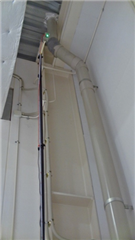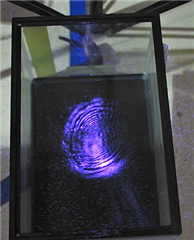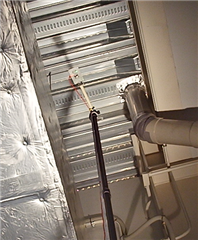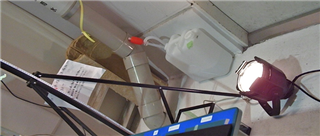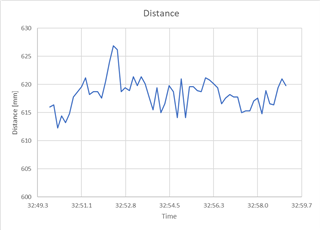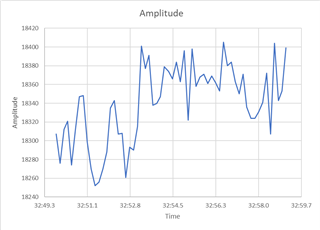Background
We have completed the evaluation of all the calibration procedure on modified OPT3101EVM (replaced LED with LD) in July.
We delivered one set of the OPT3101EVM module to our customer with updated calibration data in built-in flash memory for measurement using Latte.
Our customer have made further evaluation at their site and they faced some issues as follows.
It will be very helpful if the explanation to the issues is provided.
Fluctuation on muddy water
Our customer had collected data on muddy water.
It was a normal flat measurement data most of the time.
But some of the time the measured distance fluctuates like the plot below:
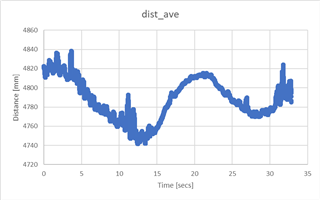
(each point is averaged by 400 samples)
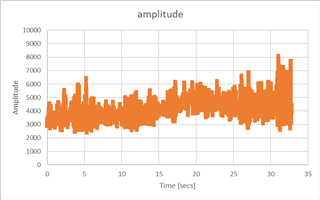
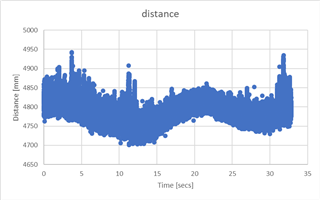
(raw data of distance, ave=2)
The amplitude does not apparently fluctuate while the distance does.
The fluctuation went slowly, with period around 20 secs peak-to-peak and range of 100mm.
Fluctuation when halogen light strikes directly
They also use halogen lamp lighten towards the sensor directly with distance about 5m.
They have measured the luminance at PD was around 3500lux which was not a very strong light.
They turn the lamp on at 5secs after starting the measurement.
And the plot was as follows:
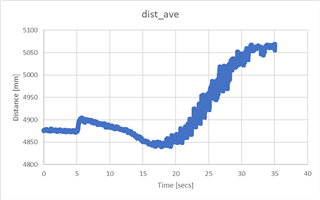
(each point is averaged by 400 samples)
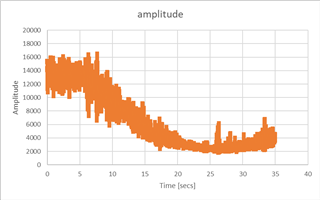
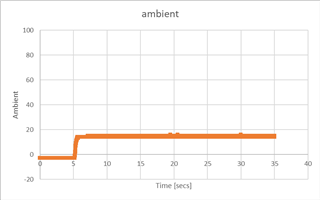
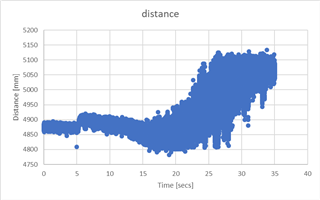
(raw data of distance, ave=2)
As the light turned on, the ambient value goes up and stop at a point.
But the distance value goes up and down and then gradually goes up as the amplitude only goes down gradually.
The noise get worse as well after turned on the light.
I was expecting that the distance get stable as the ambient value stabilized, but it did not happen.
Measured distance gets far when amplitude gets low
When a measured distance is obtain with sufficient amplitude, the accuracy is relatively good.
But insufficient amplitude would cause the measured distance gets further and lower the accuracy.
I have an explanation as below, and I'm wondering if it is correct or not.
When a distance is measured, the reflection from the target is obtained, as well as diffused reflection from various direction.
In the case that sufficient amplitude is obtained, the diffused reflection is ignorable, so the correct reflection is not affected.
But in the case that sufficient amplitude is not obtained, the diffused reflection dominates bigger portion of the reflected signal which has longer phase shift.
It will cause the measured distance get longer than it actually should be.


